Time to Read: 4 Minutes
When it comes to hiring, recruiters play a critical role in the process, especially for go-to-market roles in sales, marketing, and customer success. They shoulder the responsibility of the entire recruiting and hiring process, from finding and attracting top talent to effectively managing the entire journey for your organization. But not all recruiters are created equal, and finding one that will be a true partner can be a challenge.
In terms of the types of recruitment companies that exist, there are three: RPO, retained, and contingency. And while contingency recruiters have dominated the field, numerous business experts and advisors have reached the consensus that contingency recruitment falls short of delivering effective and impactful results for businesses.
What is Contingency Recruitment?
Contingency recruitment is a widely favored approach where an organization engages a recruiting agency to source candidates for a vacant position. Under this model, the agency operates on the premise of “no fee unless we successfully fill the role,” putting the onus of payment on the recruiter rather than the client. This model worked well for many companies until it eventually lost its effectiveness.
Fueled by the dot com boom in the mid-90s, the rise of the internet has brought about significant changes in the recruitment landscape. In over two decades, technology has revolutionized how candidates are discovered and selected, enabling recruiters to tap into a vast talent pool and utilize advanced tools for targeted searches.The emergence of the tech/SaaS industry has also given rise to specialized roles and skill sets, demanding a recruiting approach that is refined and tailored to these niche requirements. In tandem with these changes, companies have experienced a notable shift in their hiring practices, with internal Talent Acquisition teams gaining momentum as a cost-effective and camaraderie-building strategy through employee referrals.
This improves financial efficiency and fosters diversity and inclusion, a growing business priority. Moreover, the candidates’ landscape has also changed, now prioritizing flexibility, mental well-being, and remote work above all else. With more opportunities and new companies, the dynamic job market has shifted the balance of power, compelling companies to adapt and meet candidate expectations to attract and retain top talent.
Amidst this backdrop of rapid evolution and dynamic shifts, contingency recruiting faces limitations in delivering effective outcomes. The traditional model, once dominant, now struggles to keep pace with the demands of a highly competitive and specialized job market.
Now, contingency recruitment isn’t dead by any means. Successful recruiters and companies still hire on this basis all the time. But it’s important to understand the benefits and drawbacks before deciding which type of recruiting firm is best for you.
Contingency Recruitment Benefits
The pros of contingency recruitment for your hiring strategy.
- Cost-effectiveness
One of the main advantages of contingency recruitment is that it can be cost-effective. Companies only pay a fee to the recruiter if they hire a candidate through their services. This means they’re not required to pay any upfront costs, making it a more attractive option for companies with a limited hiring/recruitment budget.
- Nimble
Contingency recruiters are results-oriented and normally represented by smaller firms. After all, they want to get their bonus. That means they’ll work fast to get you as many candidates at once to increase the chances you will hire someone they’ve sent your way.
- Flexible Terms
Contingency recruitment agencies work on a per-project basis, allowing companies to engage with different agencies for each hiring project. This means that if a company has a negative experience with an agency’s process, they are not obligated to continue working with them and can easily and quickly end the relationship.
Contingency Recruitment Drawbacks
The cons of contingency recruitment for your hiring strategy.
- Lack of commitment
The main drawback of contingency recruitment lies in the inherent absence of a committed partnership from the recruiter. Since they only receive payment if the company hires a candidate, recruiters tend to prioritize contracts with higher pay and easier placements, often leaving an inadequate focus on understanding the company’s brand, value proposition, and products or services. As a result, speed becomes the driving force, as recruiters aim to secure placements swiftly to maximize their earnings. The phrase “you get what you pay for” holds particularly true.
- Lower caliber candidates
Contingency recruiting firms focus more on getting you a large number of candidates who could potentially be great fits for the position. They do this by matching keywords listed on your job description with keywords in a resume. As a consequence, these recruiters often present a multitude of candidates initially without thorough vetting for sustainability to the company or the role, leading to a recruitment process that is less specialized and more focused on quantity rather than quality.
- Lackluster company brand representation
To put it bluntly, contingency recruiters aren’t focused on making your company shine or crafting a tailored message that resonates with the right candidates. This is where spray and pray recruiting emails come into play, often leaving candidates spammed with a similar message from multiple agencies. The level of personalization and specialization is lost, not because they don’t care, but because they can’t. When you risk working for free, you have to limit your investment of work. If you value how your company is portrayed and the consistent treatment of all candidates, contingent recruitment may not align with your priorities.
Check out our Go-To-Market Interview Guide for the top five tips to implement a diversity hiring plan.

